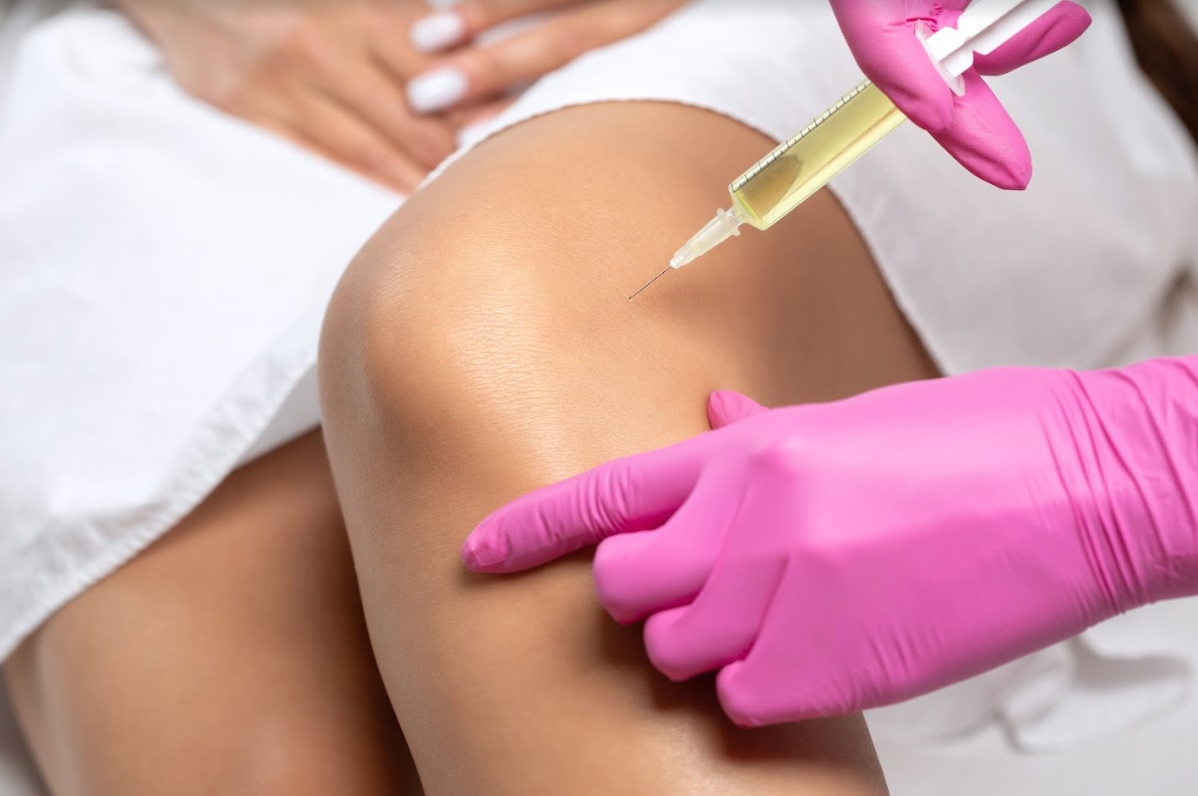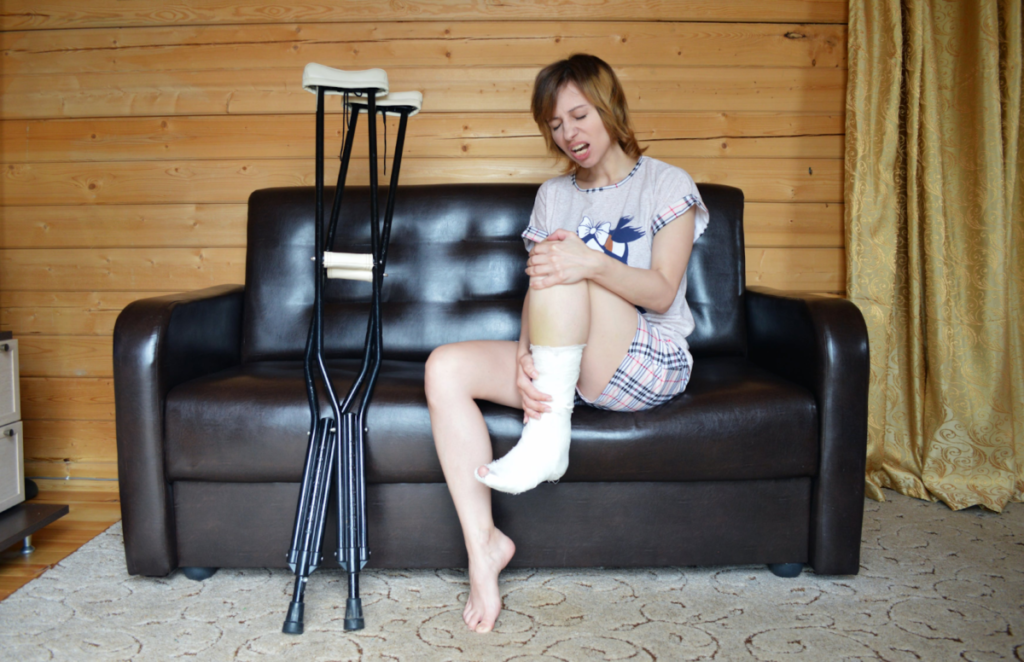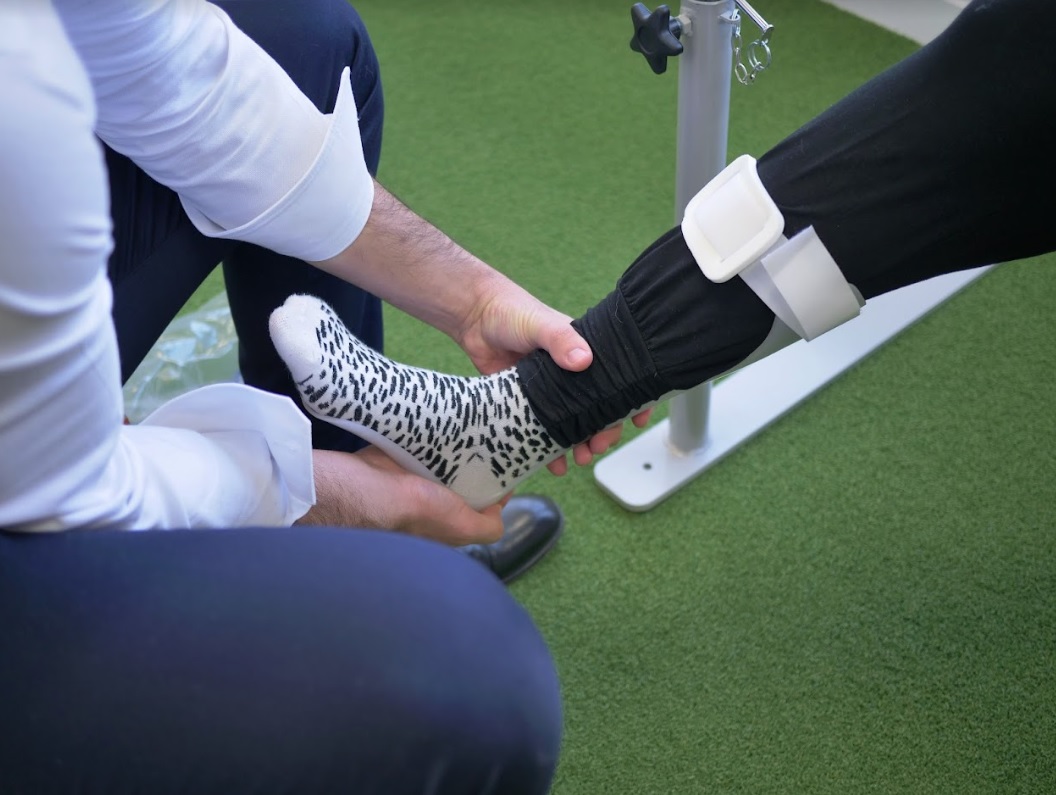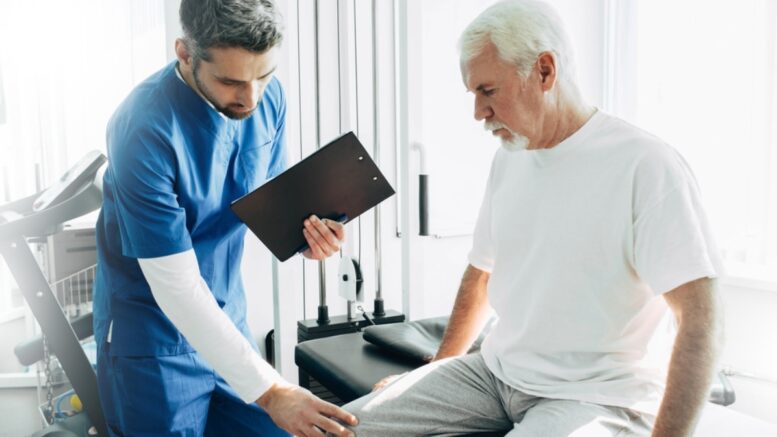In regenerative medicine, orthobiologics is a relatively new way to treat injury recovery. For athletes and physically active people, orthobiologics can be a valuable addition to their recovery routine.
You might have heard of orthobiologics, but you may not know exactly what it is. This article will explain orthobiologics and how they can help you recover from an injury.
Orthobiologics: What Are They?
Orthobiologics is a branch of medicine that uses the body’s natural mechanisms for healing to treat injuries, diseases, and other conditions. This approach differs from traditional Western medicine, which relies on medications and surgery to heal wounds.
Orthobiologics are naturally derived proteins used in medicine, biotechnology, and sports recovery. The goal of orthobiologics is to support the body’s natural healing process. It can help with pain management and inflammation reduction while also speeding up your recovery time.
Many treatment centers like Rocky Mountain Spine & Sports use orthobiologics to treat patients. They’re becoming more common in the medical field, especially as doctors learn more about their benefits.
Types Of Orthobiologics
Many different types of orthobiologics can be used in your treatment. They can be categorized into three:
- Regeneration Products: These products help promote tissue regeneration, benefiting people recovering from an injury. For example, if you have a torn ligament or muscle injury and want to speed up your recovery time, this is a good choice.
- Rejuvenation Products: These products are designed to help slow the aging process. It’s an excellent option to reduce wrinkles and other signs of aging on your face.
- Replacement & Restructuring Products: These products are designed to help repair or replace damaged tissue. It’s a good choice if you have a torn ligament or muscle injury and want to speed up your recovery.
Different Methods Of Orthobiologics
Different stem cell therapy methods exist, and they include the following:
- Injection Of The Cells: The goal of injecting cells into the body is to deliver these cells to specific tissues where they can start working and repairing damaged areas in a patient’s body.
- Implantation Of The Cells: Implanting the cells into an artificial scaffold or matrix generates new tissue that can be transplanted back into a patient. It’s a good option for those who need complex and extensive repairs done to their body.
- Administering The Cells Via An Intravenous (IV) Infusion: This is the most common stem cell therapy method, as it’s relatively easy and simple to administer. The patient receives a shot of these cells in their arm that gets directly into their bloodstream.
Most Common Orthobiologics And Their Use
Orthobiologics are most commonly used to treat sports injuries and other musculoskeletal conditions. Here are some of the most common orthobiologics and their uses:
- Platelet-Rich Plasma (PRP): It’s a blood product processed from your blood and used to treat chronic pain, tendonitis, and other musculoskeletal conditions.
- Bone Marrow Aspirate Concentrate (BMAC): It’s a processed form of liquid that’s extracted from your bone marrow. It can be used to treat osteoarthritis and other musculoskeletal conditions.
- Amniotic Membrane Products (AMPs): These products are made from the membrane surrounding the baby during pregnancy. They can be used to treat wounds, ulcers, and joint pain associated with arthritis.
- Adipose-Derived Mesenchymal Stromal Cells (ADMSC): These cells are processed from fat tissue removed during liposuction. They can be used to treat arthritis, osteoporosis, and other musculoskeletal conditions.
- Umbilical Cord-Derived Cells: Taken from the umbilical cord tissue, this self-renewing multipotent stem cell population can be used to treat a variety of conditions, including osteoarthritis, heart disease, and diabetes. Studies also show its ability to promote tissue repair, regulate immune response, improve anti-cancer effects, and increase regenerative potential.
- Placenta-Derived Cells: These multipotent stem cells are derived from the placenta tissue of a human embryo. Some studies have shown that these cells promote tissue repair and regeneration, decrease inflammation, increase immune function, and improve overall health.

How Do They Help During Recovery?
The cells are injected, transplanted, or administered into the injured area to help repair damaged tissue and promote healing. Orthobiologics products can be used alone or in combination with other treatments, such as surgery and physical therapy.
Here are ways orthobiologics can help during recovery from surgery or injury:
Reduce Inflammation And Fibrosis
The most common use of cells intended for orthobiologics is to reduce inflammation and fibrosis. These cells help the body prevent excessive scarring by stimulating collagen production, which reduces the excess tissue that needs to be removed. It’s a game-changer for treating injuries with much-damaged tissue and scarring, such as hip replacement.
Orthobiologics like mesenchymal stem cells (MSCs) can reduce inflammation and fibrosis or scarring, which are common side effects of an injury. They do this by releasing anti-inflammatory proteins, cytokines, and growth factors that stop the body from being over-inflamed.
The benefit of using MSCs as an alternative to corticosteroids is that it reduces the risk of infection, inflammation reactions, and bone marrow suppression, as seen with steroids. Also, studies have shown that MSCs can reduce inflammation and prevent scarring. They also promote new blood vessel formation, which helps deliver nutrients to the damaged area while removing waste products.
Promote Tissue Repair & Healing
Injuries often damage muscle, ligaments, tendons, and other tissues. Orthobiologics can speed up the body’s natural healing process by helping damaged tissue repair itself.
Studies have shown that MSCs increase collagen production, a connective tissue protein essential for tissue repair. They also help release enzymes called metalloproteinases, which break down damaged tissues and allow healthy cells to migrate into the area and start forming new tissue.
The process is similar to how a cut on your finger heals. First, damaged skin cells die and are replaced by new cells that begin forming new tissue. Orthobiologics can help this process by releasing enzymes that break down damaged tissues, allowing healthy cells to migrate into the area and start creating new tissue.
Promote Cartilage Growth & Repair
Osteoarthritis is a degenerative joint disease that can cause the cartilage in your joints to break down. Orthobiologics help repair and regenerate cartilage by increasing collagen production and other proteins that keep it strong and healthy. The cartilage-repairing properties of orthobiologics are especially beneficial for people with osteoarthritis and other joint conditions.
In addition, orthobiologics can help repair cartilage in the knees, hips, and spine. Many studies found that stem cells helped with the structural repair of damaged human cartilage after a year of post-treatment.
Increase Overall Mobility & Range of Motion
Orthobiologics can also help improve the range of motion, flexibility, and mobility in people who’ve experienced joint injuries or surgery. They help injured tissues heal more quickly and increasing the amount of cartilage, ligaments, and tendons that form within bones.
Meanwhile, people who’ve had joint surgery can use orthobiologics to help their bodies recover more quickly from the procedure and prevent complications from forming. They also support the skeleton and make it easier for people with osteoporosis, arthritis, or other bone-related conditions to move around.
Studies have also shown that orthobiologics can help athletes recover from sprained ankles, torn ligaments, and other injuries that affect mobility. It’s particularly helpful for people who want to get back into their physical activities as quickly as possible.
Improve Bone Health & Strength
It’s no secret that bone health is a major concern for older adults. As people age, their muscles and bones become more fragile and prone to breakage—especially if they’re inactive or have poor diet habits.
Orthobiologics can help prevent osteoporosis and increase bone mineral density (BMD) in people with low BMD. Consequently, the proteins in orthobiologics stimulate bone cell activity and promote new bone formation.
So, if you’re concerned about maintaining strong bones as you age, using orthobiologics can help keep your body healthy and active for years to come. It may be especially beneficial for people with a family history of osteoporosis or at high risk of developing it.

Avoid Or Delay Invasive Treatment
Invasive treatment options are often the last resort in osteoporosis treatment. These include surgery to implant a spinal cord stimulator or other device and medication like bisphosphonates, causing severe side effects such as pain, nausea, and vomiting. These treatments can have complications, such as infection and tissue irritation surrounding the implantation site.
Meanwhile, if you’re concerned about the effects of osteoporosis, the best thing you can do is avoid or delay invasive treatment. It includes hip and knee replacement surgeries, which can be painful and expensive. Orthobiologics may help slow down the progression of osteoporosis so that these invasive treatments are unnecessary.
Understanding The Natural Healing Process
If you’re considering a natural approach to treating and preventing musculoskeletal injuries and diseases, it’s essential to understand how the body’s natural healing process works. The human body has a unique ability to repair itself when given the right tools, which includes protein-rich foods like those found in orthobiologics.
Take a look at how this works:
The bone matrix is made up of collagen and calcium phosphate. When you injure your bone, the body releases an enzyme that breaks down collagen into its amino acid components. It allows calcium phosphate to penetrate the damaged area and repair it using minerals from your bloodstream.
Once this process is complete, new cells grow on top of the repaired tissue and remodel it until it’s structurally sound. However, the only problem with this process is that it takes a long time. Bone healing can take months or even years, depending on the severity of your injury.
And since you’re unable to do much during this time, many people suffer from chronic pain and limited mobility, making them more likely to experience bone weakness or pain. Orthobiologics can help speed up this process, making it more effective and reducing your recovery time by stimulating the body’s natural healing process.
Orthobiologics work by activating your osteoblasts or the cells responsible for the production of bone tissue. They also increase their rate of differentiation and maturation, which in turn results in faster bone formation.
Are They Effective?
There’s plenty of evidence to suggest that orthobiologics is effective for maintaining bone health. Although stigma still exists about biologics for osteoporosis and other injuries, many doctors now recommend them as a first-line treatment. However, orthobiologics may not be safe for everyone.
For example, if you have an allergy to any ingredients in the product, it’s best to consult your doctor before trying it. Remember that your doctor is the best person to recommend whether or not you should use any form of treatment or medicine.
Overall, these products aren’t for everyone. Hence, getting a proper diagnosis is essential before starting any treatment.
Orthobiologics: Not Just For Athletes
The vast majority of orthobiologics are used by athletes to help speed up their recovery time and prevent injuries. However, it has recently begun to change as more people realize these products’ benefits on general health.
Nowadays, orthobiologics aren’t just for professional athletes anymore. They’re also used by people who want to live healthier lives and reduce their risk of injury. As a matter of fact, orthobiologics are used to treat a variety of conditions, including rheumatoid arthritis and osteoarthritis.

Moreover, it may help people who have suffered a stroke or other neurological injury get back on their feet again. It may include patients with:
- Multiple sclerosis (MS)
- Parkinson’s disease
- Cerebral palsy
- Guillain-Barré syndrome
The use of orthobiologics is becoming more mainstream, and many people are using orthobiologics products to treat chronic pain. These products can also be used in conjunction with traditional medicine or surgery.
Are Orthobiologics Right For You?
Orthobiologics offer less-invasive treatment options for many patients. If you’re suffering from or experiencing any of the following, you may want to consider orthobiologics:
- Injured muscles, tendons, or ligaments
- Broken bones
- Surgical wounds
- Traumatic injuries
- Joint pain and arthritis or rheumatoid arthritis
Orthobiologics are generally safe to use, but they’re not suitable for everyone. If you’re considering using these products to treat chronic pain, talk to your doctor first.
Final Thoughts
Orthobiologics are one of the most effective ways to heal injuries and improve your quality of life. The key is finding an orthobiologics specialist who can help you with your particular condition.
It would also help to ensure they’re trained in all aspects of orthobiologics—not just the treatment. You want someone who understands the underlying causes behind your condition so that they can give you a customized treatment plan that can improve your quality of life.
If you’re suffering from joint pain, inflammation, or swelling, you should consider seeing a specialized physician. They can help you recover faster and return to the activities you love without surgery or invasive treatments.
